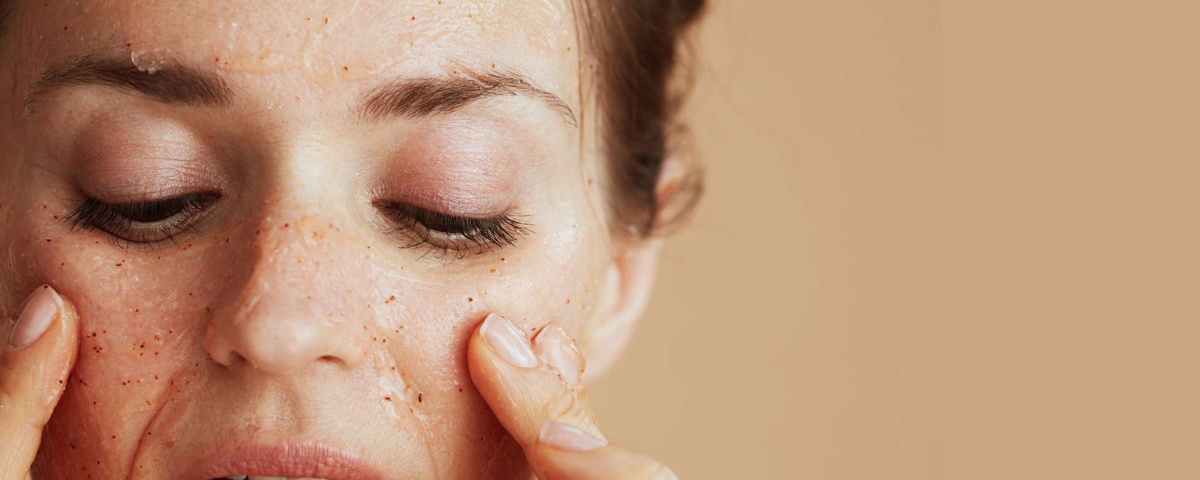The skin barrier is the outermost skin layer and includes the stratum corneum, its microbiome and its chemical composition. This layer is rich in different classes of lipids, such as ceramides, cholesterol, fatty acids and other more hydrophilic substances such as filaggrin, lecithins, amino acids, sugars and proteins. The global skin barrier care products market has a projected value of US$1.6 billion by 2024 and has a projected value of US$2.2 billion by 2031, with an estimated CAGR of 4.7% for this period. This market size represents a great opportunity for innovation for the cosmetics industry.
This layer has various functions, such as protecting the body from external agents and preventing irritating or dangerous substances, as well as bacteria, viruses and allergens, from entering the body. Among its most important functions is preventing water loss. It also helps regulate body temperature. On the other hand, the skin barrier allows us to feel tactile sensations, such as touch, pressure and pain. That is why it is a very important element of our sensory system.
¿What factors can damage the skin barrier? Harsh soaps and cleansers can remove the skin’s natural lipids, making it more vulnerable to irritants. Hot water can strip skin of its natural oils and make it drier. Dry weather can also dehydrate the skin and damage the skin barrier. UV rays can damage skin cells and weaken this barrier. Certain skin conditions such as eczema and psoriasis can also damage it.
¿Why is barrier care trending? During the pandemic we suffered the deterioration of the barrier due to the excessive use of soaps and sanitizers. Photos of doctors and nurses with skin conditions due to excessive use of masks were famous on social networks. On the other hand, global warming, stress and pollution continue to rise. That’s why consumers are now more aware that healthy skin begins with a healthy skin barrier. Consumers know that when the skin barrier is damaged, the skin can become dry, irritated, sensitive and prone to problems such as eczema, rosacea and acne. Next, we’ll look at some of the booming trends in barrier care.
O2 my skin!: This year we have seen new studies that indicate how low oxygen levels can alter the health of the skin barrier. The industry is developing innovative biochemical mechanisms to increase skin oxygenation to restore vitality and promote barrier health. Soothing is the new black.
Repair, repair & repair: Claims related to repair are presented as one of the big trends in skincare for this year. Xerosis is now one of the main targets in facial care. Statistics indicate that this condition is very common, with almost a third of the population suffering from it. Dry skin can have a significant impact on the quality of life of consumers and if not treated correctly, it can lead to eczema or atopic dermatitis, which is a condition that causes very dry skin, itching and inflammation. This dermatitis is chronic and usually worsens periodically.
Skin barrier month: Recently a well-known brand of barrier treatment products declared May 2024 as Skin Barrier Awareness Month. This proposition is interesting because we are seeing brands helping to transform the way consumers are approaching the skin barrier and overall skin health.
Inclusive barrier: Skincare is also inclusive. We are seeing very interesting scientific advances on the biochemical characteristics of the barrier of different skin types, which translates into innovative launches in concepts related to the care of the skin barrier rich in melanin, in darker skin tones, male barrier skin care, barrier care in people who are making gender transition, in patients receiving chemotherapy, in babies, children and adolescents, among others.
Tweens skincare: In recent months we have seen several reports about the trend of tweens obsessed with skincare products. This has caused several dermatologists and professionals to speak out on the matter, indicating the care and precautions that this group of consumers should take with facial treatments. Experts indicate that skin care routines at an early age can have some benefits, for example encouraging young people to establish healthy habits from the beginning, but there are also risks, experts warn. Social networks are essential to promote the proper use of cosmetic products in the tweens segment. Responsible product design for this market segment represents a great opportunity for the industry. Cleansers, basic moisturizers and sunscreens are the basics for this target.
Science backs it up: The consumer looks for products, ingredients and solutions with scientific support. Innovations in ceramides and hyaluronic acid are the main protagonists in this category.
Less is more: We are seeing a very interesting trend in the market. Gone are the days of ten-step routines. Consumers want simpler, more effective solutions and routines.
Microbiome matters: Definitely, the developments in the care of the microbiome are fundamental for the development of this category. Studies and new findings on the connection between the microbiome and skin health are opening the doors to new concepts, mechanisms, benefits and claims.
Men’s skin barrier: As demand for skin care products that target the skin barrier increases, so do the options available for men. There is an increasing range of products designed specifically for the needs of men’s skin, which is characterized by a thicker texture, higher levels of sebum production and a specific repair need when daily shaving occurs. Sheet masks are gaining ground in men’s cosmetics.
The focus on strengthening the skin barrier has become a critical trend in skin care. Products aimed at improving barrier function help protect the skin from environmental pollutants, irritants and allergens, while maintaining moisture levels. Dysfunction of the skin barrier results in skin diseases that can be treated with specially designed skincare products. 2024 is presented as the year of “barrier-loving skincare”.
Feeling inspired?
Then why not visit one of the in-cosmetics events around the world?


